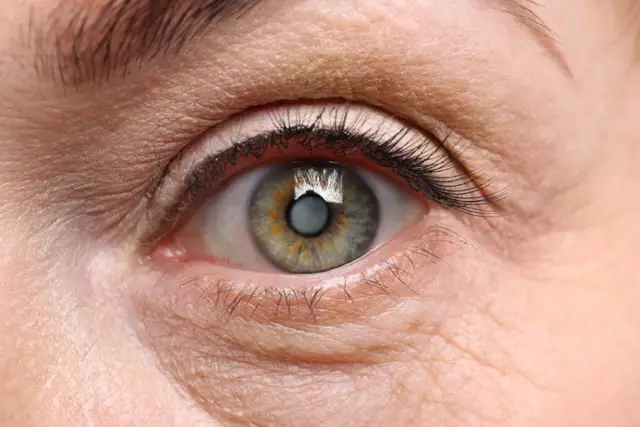- Author Rachel Wainwright [email protected].
- Public 2023-12-15 07:39.
- Last modified 2025-11-02 20:14.
Neuroma
General characteristics of the disease

A neuroma (or schwannoma) is a benign tumor that forms in the Schwann cells of the spinal, cranial, and peripheral nerves. Thus, a neuroma is a neoplasm in the cells that cover the nerves. They are rounded, sometimes lobular, capsule-like formations. They appear most often in the root of the auditory nerve (vestibular portion), progress in the cerebellar pontine angle (facial and auditory nerves), less often in the root of the V nerve (maxillary and mandibular, orbital nerves). And very rarely, neuromas occur in the roots of the glossopharyngeal and vagus nerves.
The percentage of neurinoma diseases is relatively small and amounts to about 8% of all intracranial neoplasms and about 20% of all primary spinal formations. Middle-aged and older people are susceptible to this disease, while women get sick more often. Because a neuroma is benign with slow-growing neoplasms, then it rarely grows into a malignant tumor.
The most common types of neuroma are:
1. Morton's neuroma. This benign tumor forms in the area of the plantar nerve of the foot. In most cases, it occurs at the site of the passage of the nerve of the third and fourth toes, sometimes between the second and third toes. Mostly affects one foot, very rarely both.
2. Neuroma of the auditory nerve (also called vestibular schwannoma). In most cases, such a tumor arises in the vestibular branch of the auditory nerve, and its growth continues in the cerebellar-bridge angle. The neuroma expands, causing pressure on the cerebellum and brainstem. Direct contact of the formation with the facial nerves sometimes even affects the lower cranial and trigeminal nerves.
Distinguish between unilateral neuroma of the auditory nerve (about 95%) and bilateral (5%). The latter is usually caused by neurofibromatosis, and its first manifestations are possible already in the second decade of life, in contrast to the one-sided one, which, most often, affects people aged 40-50 years.
3. Spinal neuroma. It is caused by a tumor of the roots of the spinal nerves, and in most cases occurs in the thoracic and cervical spine, less often in the lumbar. It is considered the most common primary neoplasm of the spinal cord. It develops as an extramedullary-intradural tumor in Schwann cells.
Spinal nerve root neuromas can extend extradurally through the intervertebral foramen. This form of neuroma belongs to the "hourglass" type and is characteristic of the cervical spine. The consequences of a spinal neuroma are bone changes that are diagnosed by conventional spondylography.
A neuroma of the trigeminal and other nerves is a consequence of a tumor of the auditory nerve, and such a type as mediastinal neuroma is a subtype of a tumor on the spine.
Neurinoma causes
Histologically, neuroma is the result of benign proliferation of Schwann cells (hence the second name of the disease "Schwannoma"), which form the myelin sheath of nerves, and what affects this process is not fully understood.
Symptoms of a neuroma

The first noticeable symptoms of acoustic neuroma are ringing in the ears, about 60% of all patients complain of it, as well as hearing loss, especially noticeable during a telephone conversation. In most cases, the work of the auditory function changes gradually, but in 10-20% there is an instant hearing loss. Lesions of the vestibular nerve can occur with a sharp turn of the head or body, with an unpleasant feeling of instability or loss of balance. In the case when the formation is quite large, hydrocephalus (accumulation of fluid in the brain) may appear. In this case, as a concomitant symptom, a barely noticeable facial paralysis is possible.
The main symptom of spinal neuroma is radicular pain caused by the development of the disease in the posterior sensory roots. Spinal neuromas develop slowly. Therefore, the correct diagnosis is made only after several years of pain, if the localization is seen in the wide lumbosacral region. The narrow cervical spine makes it possible to detect the disease at an early stage, because there are signs of pressure on the spinal cord. If there is a tumor in the lateral triangle of the neck and in the supraclavicular area (which usually occurs in the roots of the cervical or brachial plexus), pain in the neck or shoulder girdle is possible.
Because peripheral neuromas are long-term and asymptomatic, the tumor is detected as a subcutaneous mass without painful symptoms.
Neurinoma treatment
Neurinoma treatment can take place in several ways, regardless of the site of tumor formation.
1. The conservative method of treatment in this case involves the appointment of drugs such as: mannitol in combination with glucocorticoids, as well as control of water and electrolyte balance and diuresis. Also prescribed drugs that improve cerebral circulation.
2. The most common method is surgical removal of the neuroma.

This method is about radical removal. Treatment of an early neuroma is possible with microsurgical intervention. With this removal of the auditory nerve neuroma, the function of the facial nerve, and possibly hearing, is preserved. In such cases, a translabyrinthine approach to treatment is used, but hearing preservation is possible if the tumor does not exceed 2 cm.
3. The method of stereotactic radiosurgery is an alternative to the removal of neuroma, because in this case, the growth of the tumor itself is controlled, while the negative results have low rates.
Radiosurgical treatment is indicated for the elderly, in the presence of somatic pathology, which does not allow for surgical treatment of neuroma, and in case of refusal of the patient from surgery. A tumor of no more than 30 mm is subject to this method;
4. In the case of a slow growth of education, which is especially typical for elderly people or with severe concomitant diseases, a wait-and-see tactic should be used, which includes CT or MRI and constant monitoring of the condition. The palliative method of treating neuroma is used here, i.e. bypass surgery to eliminate hydrocephalus.
Neurinoma is not a malignant tumor, but if you do not pay attention to the symptoms in time, it can be very dangerous to human health, and its treatment will not bring positive results.
YouTube video related to the article:
The information is generalized and provided for informational purposes only. At the first sign of illness, see your doctor. Self-medication is hazardous to health!






